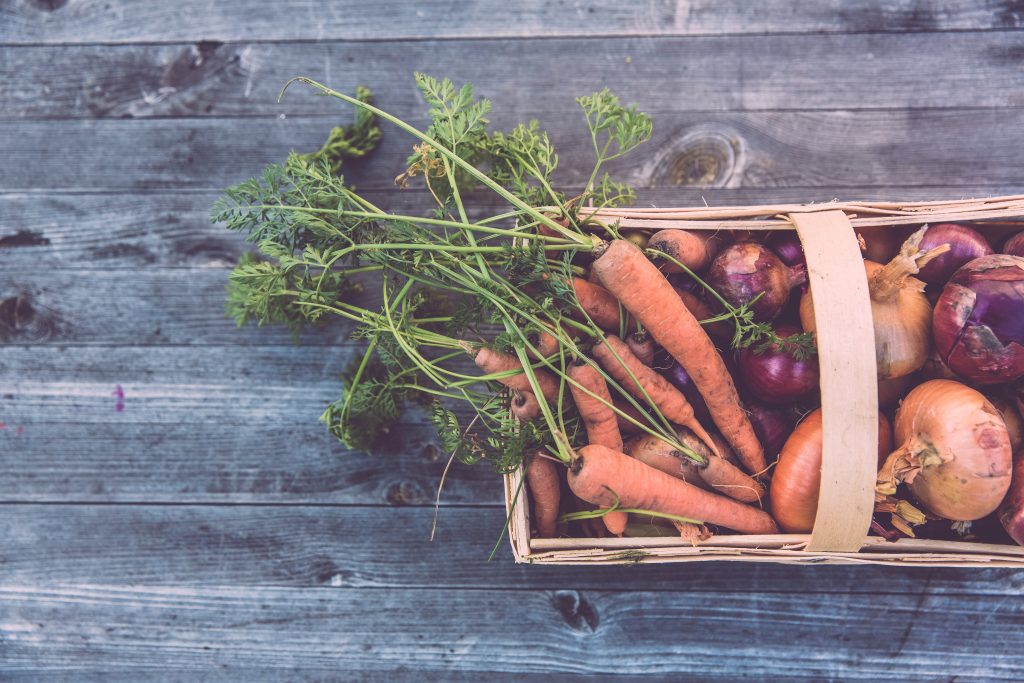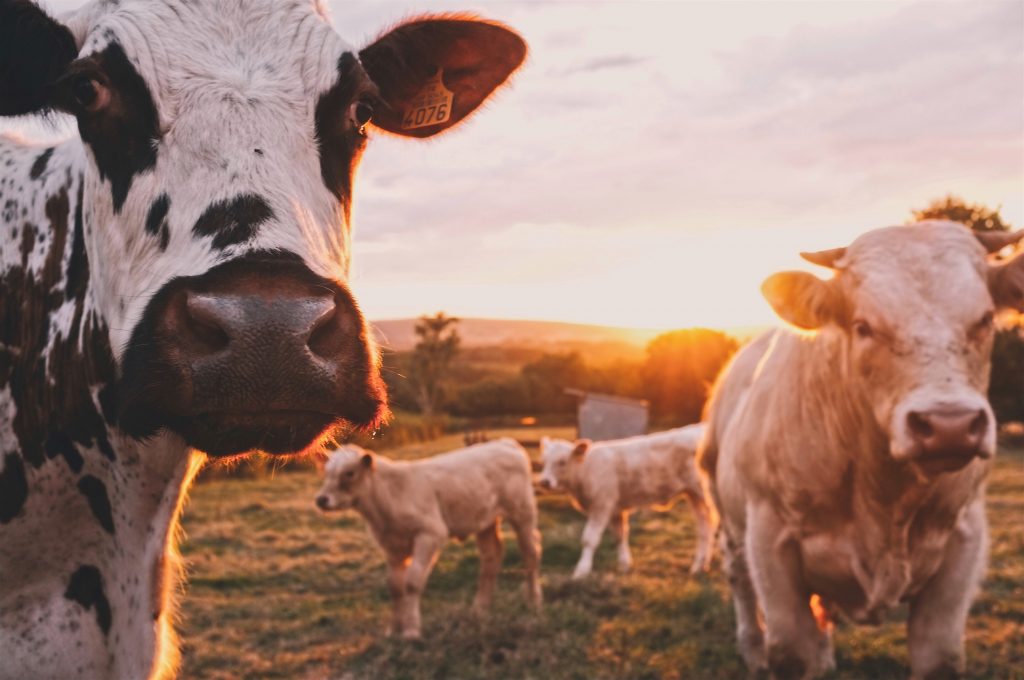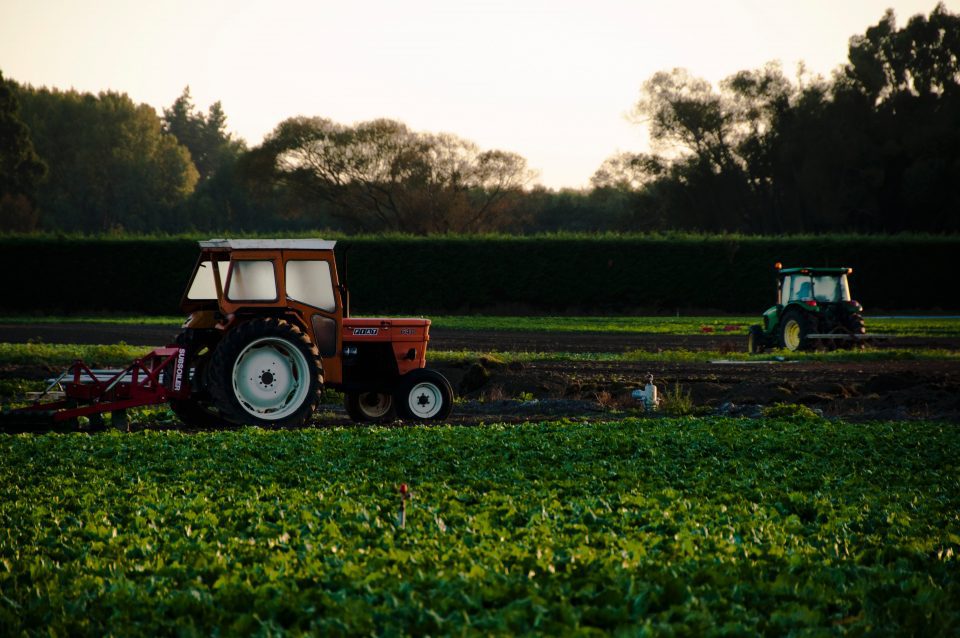Agriculture is the oldest and largest industry of the world. The basic needs of the mankind – food, shelter and clothing- comes to us from agriculture industry. The Agriculture sector and manufacturing industry are the two sides of a coin. The top ten most powerful countries in the world include the US, Russia, China, Germany, UK, France, Japan, Israel, Saudi Arabia, and South Korea. Agriculture of these countries is highly developed and is at par with industry in all aspects. Agriculture can help to reduce poverty, raise income and improve food security for 80 per cent of the world poor, who live in rural areas and work in agriculture.
India is on the threshold of transformation. With steady growth in the service sector as well as in agricultural, industrial and manufacturing our country has made significant progress to make itself an international business hub. With large achievements to showcase it has the potential to invite major investments in sectors like textile and designing, food, confectionery, industry, beverage and so on. The country is now poised to move from its present $2.8 trillion economy to $5 trillion economy by 2024. About a large percent of the population being employed in agriculture, the sector accounts only for 15 percent of our GDP. For consumption to grow to the next level in a robust manner, the income in the agriculture sector needs to rise. In the recent budget presented in the Parliament, the government of India has indicated a 15 point comprehensive road map for our agriculture sector.
Agriculture is the primary source of livelihood for about 58 per cent of India’s population. Gross Value Added by agriculture, forestry and fishing is estimated at Rs 18.55 lakh crore (US$ 265.51 billion) in the current financial year. Due to its immense potential for value addition, particularly within the food processing industry the Indian food industry is poised for huge growth, increasing its contribution to world food trade every year. The Indian food and grocery market are the world’s sixth largest, with retail contributing 70 per cent of the sales. The Indian food processing industry accounts for 32 per cent of the country’s total food market, one of the largest industries in India and is ranked fifth in terms of production, consumption, export and expected growth. It contributes around 8.80 and 8.39 per cent of Gross Value Added (GVA) in Manufacturing and Agriculture respectively. It is 13 per cent of India’s exports and six per cent of total industrial investment.
During 2018-19 crop year, food grain production estimated at record 283.37 million tones is expected to reach 291.1 million tonne in 2019-20. Milk production was estimated at 176.3 million tonnes during FY18, while meat production was 7.4 million tonnes. As of August 2019, total area sown with kharif crops in India reached 92.6 million hectares. India is the second largest fruit producer in the world. Production of horticulture crops is estimated at record 313.9 million metric tonne (MMT) in 2018-19 as per third advance estimates. Total agricultural exports from India grew at a CAGR of 16.45 per cent over FY10-18 to reach US$ 38.21 billion in FY18. In FY19, agriculture exports were US$ 38.54 billion. India is also the largest producer, consumer and exporter of spices and spice products.
Achievements in the agriculture sector
- Foreign direct investments (FDI) in India’s food processing sector stood at US $ 628.24 million in 2018-19.
- Sugar production in India has reached 33.16 million tonnes (MT) in 2018-19 sugar season and is expected to produce 26.85 MT in 2019-20 as per the Indian Sugar Mills Association (ISMA).
- The Electronic National Agriculture Market (eNAM) launched in April 2016 to create a unified national market for agricultural commodities by networking existing APMCs got registered 9.87 million farmers, 109,725 traders on the e-NAM platform at the end of May 2018. A total number of 585 mandis in India have been linked while 415 additional mandis planed be linked by 2019-20.
- Agriculture storage capacity increased at 4 per cent CAGR between 2014-17 to reach 131.8 million metric tonnes.
- Coffee exports stood at 286.95 million tonnes in FY20 (April-September’19).
- Between 2014-18, 10,000 clusters were approved under the Paramparagat Krishi Vikas Yojana (PKVY) for organic farming.

Road Ahead
The ambitious goal of doubling farmers’ income by 2022 and the US $ 5 trillion economy by 2024 would be turning points in synchronizing agriculture and industry. The agriculture sector in India is expected to generate better momentum in the next few years due to increased investments in infrastructure such as irrigation, warehousing and cold storage. We are expected to be self-sufficient in pulses in the coming few years due to concerted efforts of scientists to get early-maturing varieties of pulses and the increase in minimum support price. Moving forward, the adoption of food safety and quality assurance mechanisms such as Total Quality Management (TQM) including ISO 9000, ISO 22000, Hazard Analysis and Critical Control Points (HACCP), Good Manufacturing Practices (GMP) and Good Hygienic Practices (GHP) by the food processing industry will offer several benefits to all stakeholders. The agricultural exports are likely to reach the target of US$ 60 billion by the year 2022.
The impact of agriculture is not only on the production of food grains, vegetables and fruits, but on so many agriculture dependent industries which get its raw material from the agriculture sector.
Agriculture as a field is not just about the traditional roles related to farming and crops. It has grown tremendously in modern times, with cutting-edge research and constant innovations taking place with enhanced scope. The focus has now shifted from traditional roles to various other dimensions like horticulture, poultry farming, pisciculture, dairy farming, agricultural biotechnology to mention a few. Agriculture is also being commercialized as proper attention is being paid to the marketing, distribution, and packaging of its output.
To explore careers in the field of agriculture and allied sectors, a few of the important options are discussed in this article.
1. Agricultural Engineering
Most of our farmers still work with outdated techniques and equipment on their farms. To solve this problem, Agricultural Engineering helps to increase the efficiency of farming activities. The focus is on 5 main areas such as (a) farm equipment, (b) agricultural and rural structures, (c) soil conservation, (d) irrigation and drainage and (e) rural electricity. An Agricultural Engineer, also provides consultancy services to various private and government organizations on farm machinery, structuring of farms and alternatives to traditional method and techniques of farming. Another exciting area where the engineer works is developing new techniques for bio-energy production like bio-fuel from agricultural waste or algae and soil and water conservation.
2. Agri-Business Management
The management of all the business aspects related to agriculture including handling activities relating to the manufacture and distribution of farm equipment and supplies; processing, storage and promotion of food, fiber and related agricultural products are taken up under agri-business. Professionals in this field are required to build the link between the farm and non-farm sectors for smooth movement of supplies are vital to agri-business management. Careers in agribusiness firms, food processing companies agricultural marketing agencies, and retail industries as an Agribusiness Manager for marketing and sales of agro-products, Quality Control Officer, Business Planning Manager, Business Development Executive are a few to mention here..
3. Agricultural Biotechnology
Application of scientific techniques such as genetic engineering, molecular diagnostics, and tissue culture to modify plants, animals and micro-organisms are being studied under agricultural biotechnology including improvements to crops and livestock by identifying and modifying certain genes. Prevention and treatment of animal diseases, Increasing milk production and better techniques of processing food is also vital to this branch. Opportunities in pharmaceutical, chemical companies or agro-based manufacturing companies as Product Development Managers are highly remunerative for such professionals.
4. Dairy Technology
Dairy Technology is concerned with the production and processing of milk and as a professional has to manage the production of milk, its collection, storage and oversee processing for consumption. The activities like the packaging, storage and distribution of milk and its by-products and ensuring that nutritional and quality standards are maintained comes under the purview of dairy technology. A B. Tech. degree in Dairy Technology enables a person to work with dairy companies like Amul, Mother Dairy, Pragati, Milk Moo, Verka, Paras.
5. Horticulture
Horticulture is the science of growing and cultivating fruits, vegetables, herbs, ornamental trees and decorative flowers. A Horticulturists aims for improving the quality, growth, nutritional value and yield of horticultural produce. He also works for maintaining nurseries, greenhouses, orchards and plantations. With a degree in horticulture, one can explore careers like Floriculturist (cultivating flowers), Olericulturist (cultivating vegetables), Landscaping (designing and maintaining commercial or residential gardens and parks), Viticulturist (cultivating grapes) and Pomologist (cultivating fruits). Someone can also start his own nursery or horticulture business and commercially grow flowers, fruits and vegetables.
6. Poultry Farming
Raising domestic birds like broiler/layer chickens and ducks for procuring their meat and eggs is under the studies of poulty farming. A range of diverse activities like shed management, feed supply, nutritional standards of the produce and transportation of the products comes under poultry science, A degree in this field enables one to find jobs in hatcheries, pharmaceutical companies, feed millers, veterinary hospitals, feed analysis laboratories as Farm Manager/Breeder/Hatchery Manager/Production Technologist/Feeding Technologist,/Poultry Processing Technologist.
7. Fishery Science
The principles of cultivation and harvesting of fish on a commercial basis in freshwater, brackish (saline) water or any marine environment comes under the studies of fishery science. It also focuses on studying the life, habits and breeding of various species of fish. Graduates in this field find opportunities with various commercial organizations for positions such as Aquaculture Farmer/ Shellfish Culturist/ Hatchery Technician/ Biological Science Technician/ Fish Researcher.
8. Agronomy
It is the branch of agricultural science which deals with the study of crops and the soil in which crops are grown. Persons with a degree in agronomy helps to improve the use of soil and increase the production of crops. Areas like restoration of soil fertility, treatment of saline soil, preparation of good seedbeds, optimum dates for sowing, proper methods of conservation, management of soil moisture, appropriate methods to control weeds and insects are studied under this branch. In the production and consulting sector, one could provide advice on the purchase and sale of crops and the trading of agricultural goods etc. The work responsibility range from Sales Manager for seed companies, consultants for agro-based companies as well as fertilizer and agro-chemical companies.
9. Agricultural Economics
The application of the principles of economics to the agricultural industry is considered under the studies of agricultural economics. Prediction of market trends, monitoring trade import and export patterns, consumer preferences and production methods for agricultural goods are professionally dealt under the studies of agricultural economics. Determining the price of agricultural commodities and agro products through a thorough analysis of demand and supply are dealt by Agricultural Economists. One may choose an area of expertise such as crop and livestock sciences, policy analysis, credit analysis, international trade, and agribusiness and so on.
Agricultural Education and the Indian Council of Agricultural Research (ICAR) is an autonomous body responsible for coordinating agricultural education and research in our country. It reports to the Department of Agricultural Research and Education, Ministry of Agriculture and is the largest network of agricultural research and education institutes in the world. As of January 2020, ICAR has (a) 4 Deemed Universities, (b) 65 ICAR Institutions, (c) 14 National Research Centres, (d) 6 National Bureaux and (e) 13 Directorates/Project Directorates.
The Indian Council of Agricultural Research’s headquarters is in New Delhi. The Agricultural Scientists Recruitment Board (ASRB) in light of UPSC conducts all India competitive examination for Agricultural Research Service (ARS), to recruit technical professional into various posts in the Indian Council of Agricultural Research. All India Entrance Exam for Agriculture (AIEEA) is an entrance exam for admission into ICAR institutes located through the country and 15 % of the seats of the agricultural universities recognized by ICAR. The students admitted to State Agricultural Universities under AIEEA are offered ICAR scholarships. There are 64 State Universities in India covering agricultural engineering, agricultural sciences and technology, horticulture, veterinary & animal husbandry and fishery science and technology disciplines. The various courses offered under these universities are: Agricultural Engineering, Agriculture, Horticulture, Fisheries Science, Forestry, Home Science, Sericulture, Veterinary Science & Animal Husbandry, Dairy Science & Technology, Food Science & Technology and Agriculture Marketing, Banking & Cooperation.  The level of courses offered include Diploma, Degree, Master Degree, Ph.D. and post-Doctoral programmes. Admissions to 85 % of the seats of State Agricultural Universities are through SAU entrance examination or through State Common Entrance Examination.
The level of courses offered include Diploma, Degree, Master Degree, Ph.D. and post-Doctoral programmes. Admissions to 85 % of the seats of State Agricultural Universities are through SAU entrance examination or through State Common Entrance Examination.
Indeed, there is no better time to start one’s career in agriculture and allied fields. But if someone is still having second thoughts, then this article will help to guide and select a career In agriculture and allied sector for a bright future for our youth to make up their mind.



